Can I Take a Day Off from Living in the Anthropocene?
Posted on October 24, 2021In a rapidly changing world with a seemingly infinite amount of hugely complex, terribly destructive problems that need immediate solutions, I often find myself wondering how to cope. Just the daily struggle of existing in late-stage capitalism and grappling with the imminent doom of the climate crisis is enough to knock me off my feet if I let it catch up to me. Lately my brain feels like popcorn popping and each kernel is a task I have to accomplish, a bill to pay, a text to respond to, or a worry about the latest devastating natural disaster or humanitarian crisis.
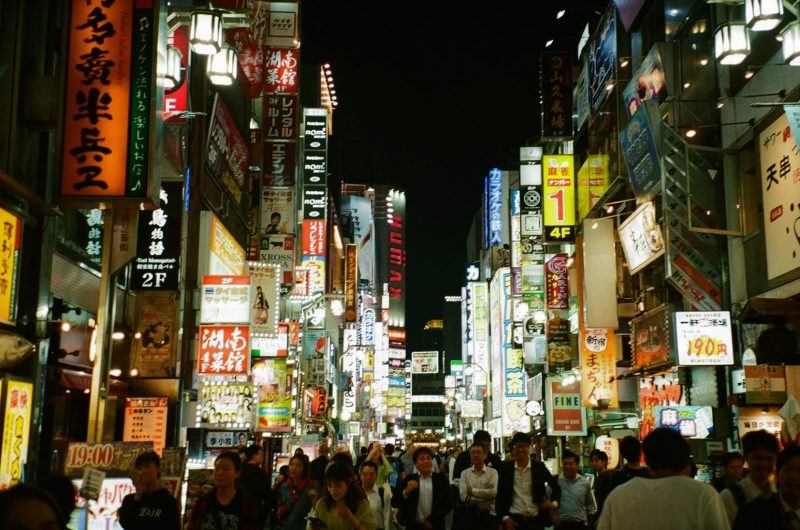
This is your brain on notifications (Tokyo, Japan 2019)
The solution that Donna Haraway offers in Staying With the Trouble is just as the title suggests – that the answer lies in staying with the symptoms of wicked problems we are experiencing in the thick present instead of escaping into abstract futurism or sublime indifference (Haraway 18). A similar essence is captured by Donella Meadows in Thinking in Systems. In her language, you learn to dance with complex systems, with uncertainty, co-creating an ever evolving movement with no defined end (Meadows 194).
The concept is so beautiful and yet, I’m exhausted just repeating it.
I desperately wish there was a simple solution to wicked problems. I want to tie everything up with a little bow so I can focus on the beauty of art and the brilliance of the Earth. Unfortunately, that is not how this works. We don’t get to take a day off from living in the Anthropocene.
Is my discomfort in the process of “staying with” partially a product of being raised in a culture ripe with White Supremacy? Growing up I was valued by society for perfectionism over process, urgency over thoughtfulness, logic over intuition, and quantity over quality (Okun). All of which I suspect destroyed my ability to rest, to find ease, to relax into pleasure and joy. How could anything so ambiguous as “staying with” be of value? How can I waste precious time dancing when the world feels like it is ending? Even my assumed right to comfort is a privilege I experience as part of the dominant culture. In his book Ideas to Postpone the End of the World, Ailton Krenak points out that for many Indigenous communities the world already ended in the 16th century with the beginning of European colonization (Krenak 20).
I went to a bar the other night, and there was a TV screen displaying a montage of people trying to ride a mechanical bull. At times this is what staying with the trouble feels like – tightly holding on while life desperately tries to buck you, hard, off of it’s back. I wonder if this desire to control so completely, to cling so tightly, to solve so urgently is part of the problem. Somehow, letting go and moving fluidly with the trouble seems more terrifying than the alternative. But, in the words of Ailton Krenak, “Why are we so afraid of falling when fall is all we’ve ever done?” (Krenak 18).
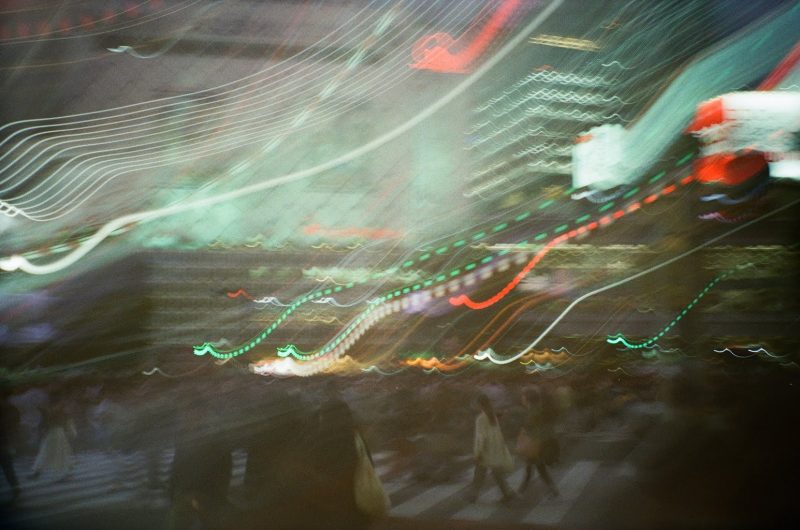
The feeling of falling (Tokyo, Japan 2019)
I’m reminded of a prophecy made by Hopi elders in the year 2000: “There is a river flowing now very fast. It is so great and swift that there are those who will be afraid. They will try to hold on to the shore. They will feel they are being torn apart and will suffer greatly. Know the river has its destination. The elders say we must let go of the shore, push off into the middle of the river, keep our eyes open, and our heads above the water.” (Chödrön, Living Beautifully 60)
How can I keep my head above water when the world feels so overwhelming? How can I hold the heartbreaking beauty of being alive on this Earth and our impossibly heavy wicked problems at the same time?
And yet – am I not already doing it?
Did I not find peace in the way the sunlight hit the leaves on an oak tree while my parents were evacuating my childhood home for the fourth year in a row?
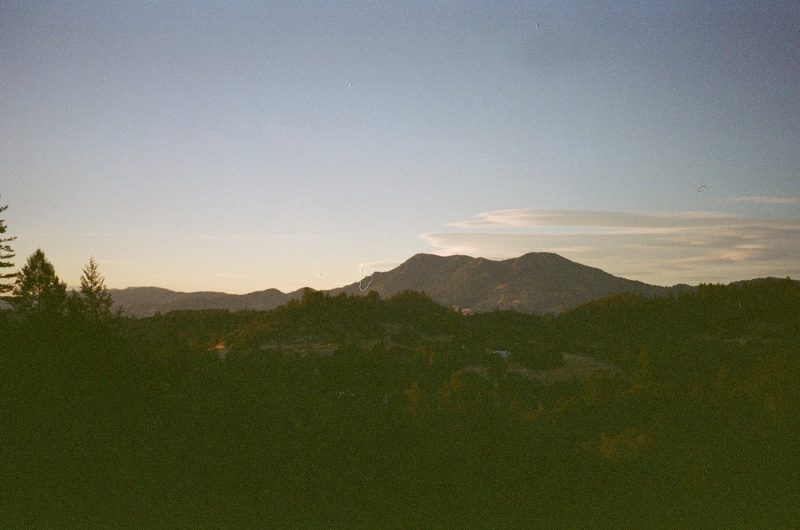
The Mayacamas mountain range, traditional homelands of the Wappo people, where I grew up in the home my father built, where wildfire has ravaged every year since 2017. (Calistoga, CA 2021)
Did I not laugh until I cried with my roommates while we were stuck inside due to wildfire smoke so toxic we couldn’t breathe? Smoke that was the product of forests sacred to me, burning?
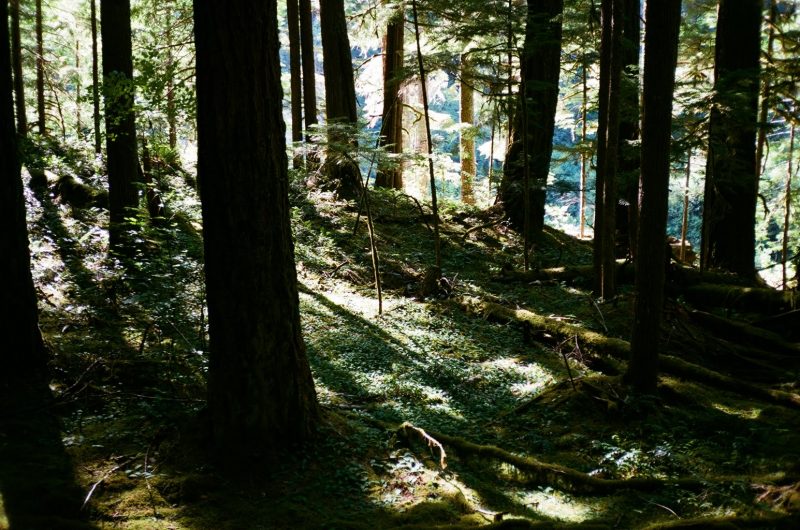
This old growth forest no longer exists, it was destroyed by the Riverside fire in 2020. The smoke from this fire was so thick, so toxic that Portland, Oregon had the world air quality on Earth for several days. (Estacada, Oregon 2020)
Do I not still have joy despite my despair?
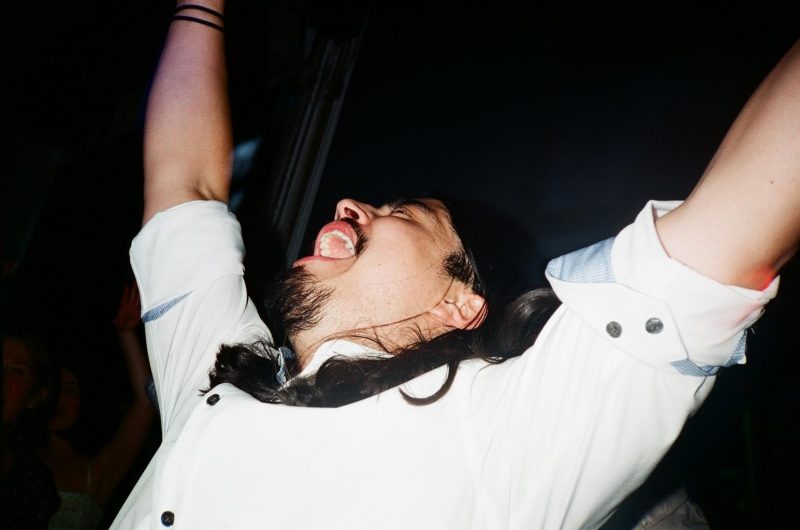
Joy, or Ben at his wedding (Portland, OR 2018)
Do I not still have hope despite my hopelessness?
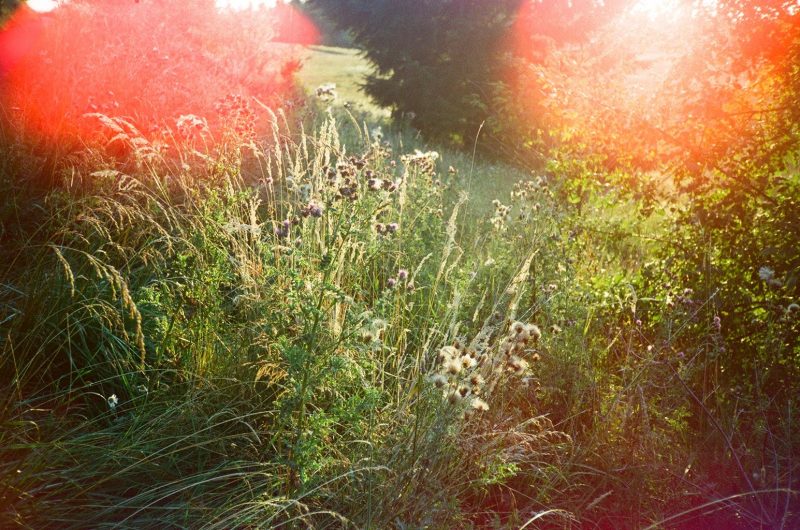
Hope (Portland, OR 2019)
Have I not been dancing, staying, falling this whole time?
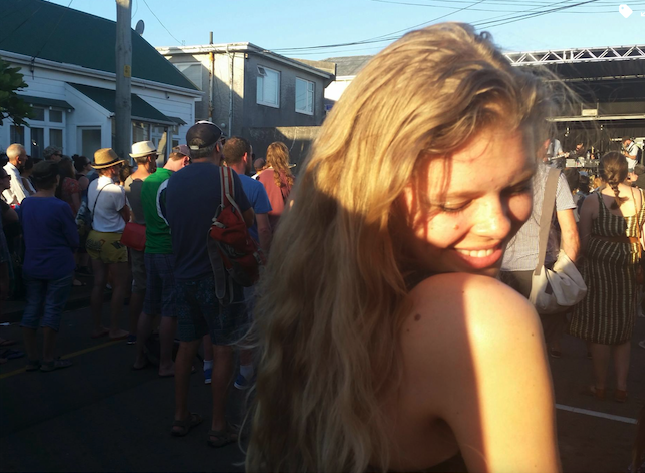
The author dancing (Wellington, New Zealand 2017)
Ailton Krenak suggests,
“Let’s put our creative and critical capacity to use making some colourful parachutes to slow the fall, turn it into something exciting and edifying…Where do we go to design parachutes? We go to the place that is beyond this hard earth, the land of dreams” (Krenak, 19).
Donna Haraway writes,
“The task is to make kin in lines of inventive connection as a practice of learning to live and die well with each other in a thick present” (Haraway, 18).
The Buddhist nun Pema Chödrön relays a story that feels particularly relevant in this instance:
“There is a story of a woman running away from tigers. She runs and runs and the tigers are getting closer and closer. When she comes to the edge of a cliff, she sees some vines there, so she climbs down and holds on to the vines. Looking down, she sees that there are tigers below her as well. She then notices that a mouse is gnawing away at the vine to which she is clinging. She also sees a beautiful little bunch of strawberries close to her, growing out of a clump of grass. She looks up and she looks down. She looks at the mouse. Then she just takes a strawberry, puts it in her mouth, and enjoys it thoroughly. Tigers above, tigers below” (Chödrön, Comfortable with Uncertainty).
Perhaps this is a practice with no simple answer. Perhaps staying with the trouble inherently implies discomfort and ambiguity, but existing in the thick present with our kin, dreaming dreams, letting ourselves fall with ease, and finding joy on the way down might just be where the fruit lies. I can’t take a day off from living in the Anthropocene, but maybe if I continue to practice staying with and finding beauty in the midst of the trouble, I won’t need to.
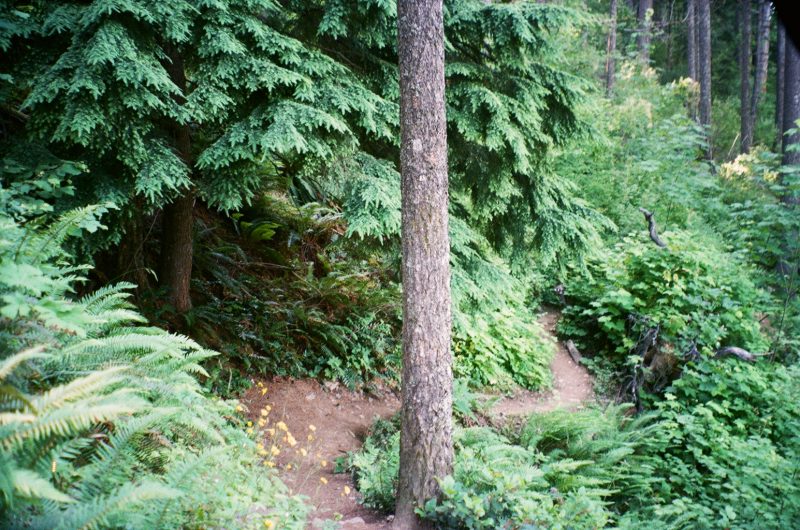
Finding peace on the path. (Carson, Washington 2021)
♥ Grace M, 2021
Sources:
Chödrön, Pema. Comfortable With Uncertainty: 108 Teachings on Cultivating Fearlessness and Compassion. Shambhala, 2003.
Chödrön, Pema. Living Beautifully: with Uncertainty and Change. Shambhala, 2013.
Haraway, Donna J. Staying with the Trouble. Duke University Press, 2016.
Krenak, Ailton. How to Postpone the End of the World. House of Anansi Press, 2020.
Meadows, Donella H. Thinking in Systems : a Primer. Earthscan, 2009.
Okun, Tema. “White Supremacy Culture.” dRworks, https://www.dismantlingracism.org/uploads/4/3/5/7/43579015/okun_-_white_sup_culture.pdf . Accessed 9 October 2021.